Glasgow’s history unfolds like a rich tapestry, beginning as a humble religious settlement in the 6th century and transforming into a bustling urban center by the 12th century. Its architectural marvels, from Georgian elegance to modern innovations, tell stories of the city’s evolution. As merchants fueled economic growth and cultural figures like Charles Rennie Mackintosh emerged, Glasgow became a vibrant hub of creativity. Yet, beneath its celebrated legacy lies a mysterious past, filled with tales waiting to be uncovered—what secrets does the city still hold?
This experience made our list of the 5 Best Historical Tours In Glasgow.
Key Points
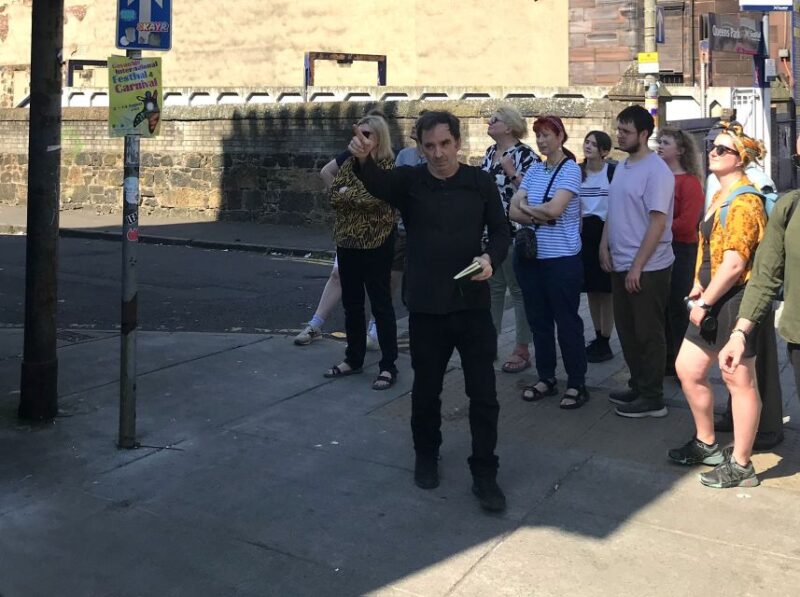
- Glasgow originated in the 6th century as a religious settlement centered around St. Mungo and the Glasgow Cathedral.
- The city flourished during the 18th and 19th centuries, driven by merchants and the Industrial Revolution.
- Architectural styles in Glasgow range from Georgian elegance to Victorian grandeur, showcasing the city’s rich history and cultural evolution.
- Notable figures like Charles Rennie Mackintosh and Andrew Carnegie significantly influenced Glasgow’s arts and education landscape.
- Modern Glasgow is a vibrant creative hub with a dynamic arts scene, music festivals, and a focus on sustainability and innovation.
Historical Origins of Glasgow

Glasgow’s history kicks off in the 6th century, when it first emerged as a small religious settlement. Founded around the site of the present-day Glasgow Cathedral, this early community centered on the teachings of St. Mungo, the city’s patron saint.
Over the centuries, Glasgow evolved from its humble beginnings into a thriving town, benefiting from its strategic location along the River Clyde. By the 12th century, it gained royal recognition, establishing a market and a college, which laid the groundwork for its future growth.
As trade flourished, the local population swelled, paving the way for Glasgow’s transformation into a bustling urban center. These origins shaped the city’s character, setting the stage for its remarkable development through the ages.
You can also read our reviews of more historical tours in Glasgow
Architectural Marvels and Styles
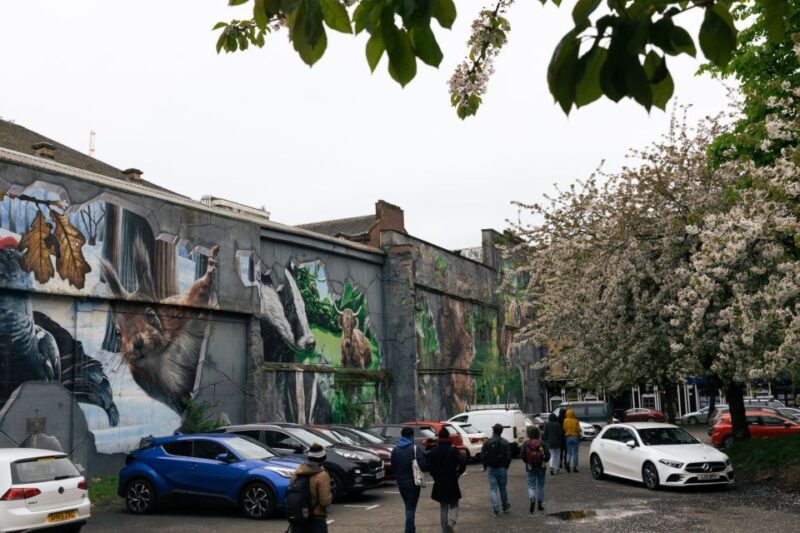
Throughout its history, Glasgow has become a canvas showcasing a rich tapestry of architectural styles. The city’s skyline features an impressive blend of influences, reflecting its vibrant past.
Visitors can admire:
-
Georgian Elegance: Characterized by symmetrical designs and classic proportions.
-
Victorian Grandeur: Showcasing ornate details and intricate facades that symbolize industrial prosperity.
-
Art Nouveau Flourish: With flowing lines and organic motifs, this style embodies creativity and craftsmanship.
-
Modern Innovation: Featuring sleek structures like the Glasgow Science Centre, emphasizing contemporary architectural trends.
These styles not only enhance Glasgow’s aesthetic appeal but also tell stories of its evolution, making it a fascinating destination for architecture enthusiasts and history buffs alike.
The Rise of Glasgow’s Merchants
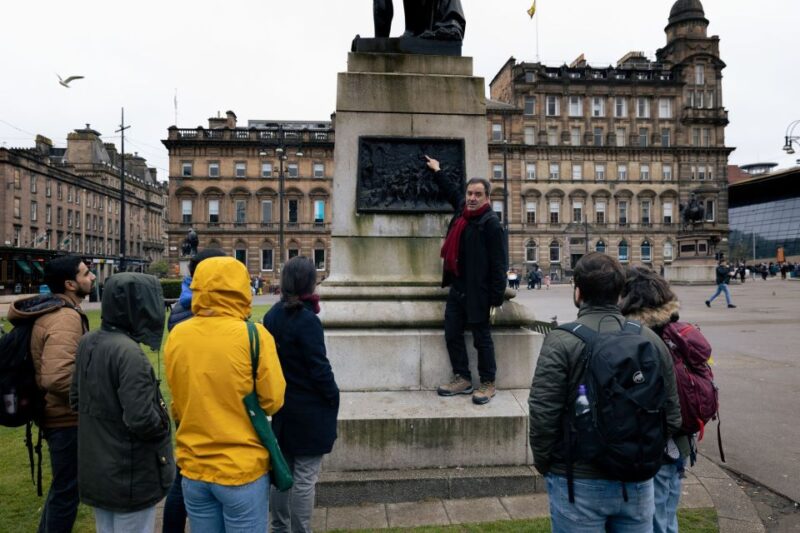
Emerging from its architectural evolution, the rise of merchants in Glasgow played a pivotal role in shaping the city’s identity and economic landscape.
During the 18th and 19th centuries, Glasgow’s merchants capitalized on trade and industry, establishing the city as a bustling commercial hub. They specialized in textiles, shipbuilding, and tobacco, generating immense wealth that transformed the urban environment.
This era saw the construction of grand warehouses and opulent merchant houses, reflecting their newfound prosperity. The merchants not only influenced the economy but also contributed to a vibrant civic life, supporting education and the arts.
Their legacy endures in Glasgow’s cultural fabric, leaving an indelible mark on the city’s evolution into a major economic center.
Cultural Transformation Through the Ages
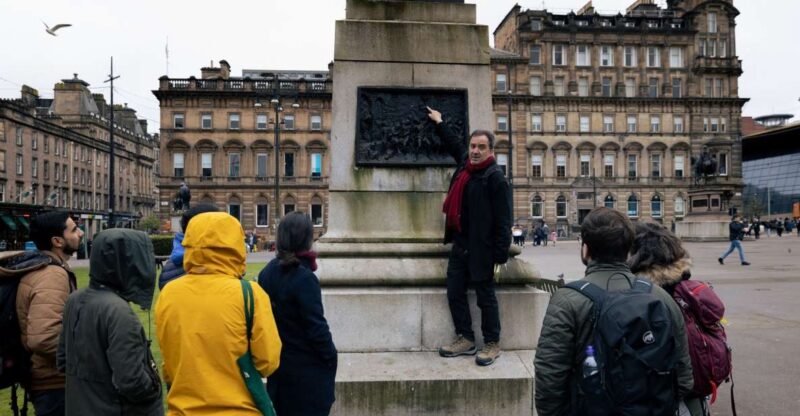
The cultural landscape of Glasgow has evolved dramatically over the centuries, shaped by a rich tapestry of influences and events. From its humble beginnings, the city embraced change, leading to a vibrant cultural identity.
Key transformations include:
-
Industrial Revolution: A surge in population brought diverse communities and ideas.
-
Artistic Renaissance: The emergence of renowned artists and musicians invigorated the local scene.
-
Architectural Flourishing: Iconic buildings showcased a blend of styles, reflecting the city’s ambitions.
-
Modern Innovation: Glasgow’s creative industries today push boundaries in art, music, and technology.
Through these phases, Glasgow’s culture continuously adapts, demonstrating resilience and creativity, making it a captivating city with a remarkable story to tell.
More Great Tours NearbyNotable Figures in Glasgow’s History

Glasgow’s history is dotted with remarkable figures who’ve significantly shaped the city’s identity and legacy. Among them, the architect Charles Rennie Mackintosh left an indelible mark with his unique blend of Art Nouveau and traditional Scottish design.
The renowned writer and poet, Robert Burns, also called Glasgow home, influencing Scottish literature and culture. Plus, the industrialist and philanthropist Andrew Carnegie emerged from Glasgow’s working class, later giving back immensely through libraries and educational institutions.
Another pivotal figure, the artist and designer Margaret Macdonald, helped establish Glasgow’s reputation in the arts. These individuals not only contributed to Glasgow’s growth but also enriched its cultural tapestry, making the city a vibrant hub of creativity and innovation.
The Impact of the Industrial Revolution
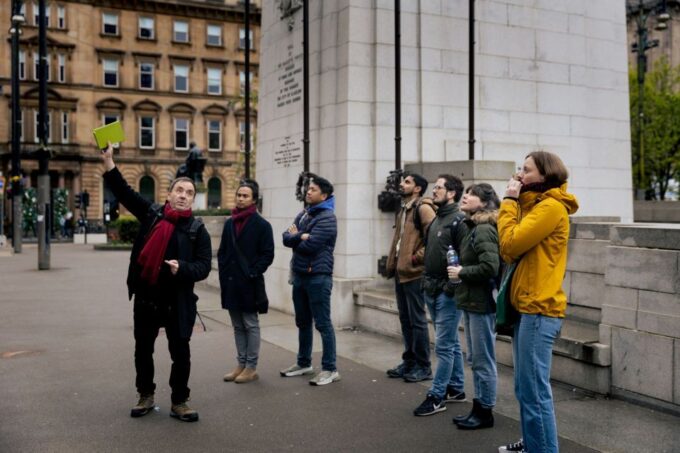
As the Industrial Revolution took hold in the late 18th and early 19th centuries, Glasgow transformed into a powerhouse of manufacturing and innovation.
The city witnessed a dramatic shift, becoming a hub for various industries. This transformation was marked by:
- The rise of textile mills, producing cloth for global markets.
- Shipbuilding yards, crafting vessels that dominated the seas.
- Ironworks, fueling the construction of bridges and railways.
- A burgeoning population, drawn by job opportunities and urban growth.
These developments not only boosted Glasgow’s economy but also reshaped its social fabric, leading to significant changes in living conditions and labor dynamics.
Glasgow’s identity evolved, earning it the title "The Second City of the Empire," reflecting its newfound prominence.
Modern Glasgow: A Creative Hub

In recent decades, Glasgow has emerged as a vibrant creative hub, attracting artists, musicians, and innovators from around the world.
The city’s dynamic arts scene thrives in spaces like the Glasgow School of Art and the Tramway, where creativity flourishes through exhibitions, performances, and collaborations.
Glasgow’s music scene boasts renowned festivals such as TRNSMT and Celtic Connections, showcasing local and international talent.
The city’s rich cultural tapestry is further enhanced by its diverse culinary offerings and unique independent shops.
With a focus on sustainability and innovation, Glasgow continues to foster a welcoming environment for creatives, blending its historical roots with modern vision.
This transformation solidifies Glasgow’s status as a leading city in the contemporary creative landscape.
Exploring Glasgow’s Hidden Gems
Many visitors to Glasgow may overlook its hidden gems, which offer a unique glimpse into the city’s rich history and culture.
These treasures reveal the essence of Glasgow beyond the well-trodden paths. Here are four must-see spots:
-
The Britannia Panopticon – The world’s oldest surviving music hall, filled with stories of performers past.
-
Ramshorn Church – An architectural marvel showcasing intricate stonework and a serene graveyard.
-
Tobacco Merchants House – A glimpse into the opulent lifestyles of the city’s wealthy merchants.
-
The Necropolis – A Victorian cemetery adorned with stunning monuments and panoramic views of the city.
Exploring these sites allows one to appreciate Glasgow’s vibrant history, enriching the overall experience of this remarkable city.
Frequently Asked Questions
What Is the Best Time of Year to Visit Glasgow?
The best time to visit Glasgow is spring or early autumn. During these seasons, visitors enjoy mild weather, blooming flowers, and vibrant festivals, making it a perfect time for exploring the city’s rich culture and history.
Are There Guided Tours Available in Languages Other Than English?
Currently, guided tours primarily offer services in English. However, participants may inquire directly with tour providers about the availability of tours in other languages, as options can vary based on demand and specific offerings.
How Do I Get to the Starting Point of the Tour?
To reach the tour’s starting point, visitors should head to Costa Coffee located at Glasgow City Chambers, outside the main entrance on the north side of George Square. It’s easily accessible and well-marked.
Is There a Dress Code for Visiting Historical Sites in Glasgow?
There’s no strict dress code for visiting historical sites in Glasgow. However, comfortable shoes and weather-appropriate clothing are recommended, ensuring visitors stay relaxed while exploring the city’s rich heritage and architectural beauty.
Can I Take Photos During the Guided Tour?
During the guided tour, participants can absolutely take photos. The guide encourages capturing memorable moments at various sites, allowing everyone to document their experience while enjoying the rich history and architecture of the city.
Recap
Glasgow’s rich tapestry of history, marked by its architectural wonders and vibrant culture, continues to captivate residents and visitors alike. From its humble beginnings to the bustling creative hub it is today, the city embodies a unique blend of the magnificent and the mysterious. As Glasgow evolves, it proudly honors its past while embracing innovation, making it a destination where history and modernity coexist beautifully. Exploring its hidden gems reveals the enduring spirit that defines this remarkable city.
You can check availability for your dates here:More Historical Tours in Glasgow
More Tour Reviews in Glasgow
- Glasgow Ghouls, Ghosts and Gruesome Tales Tour
- Private Tour Loch Lomond Stirling and the Kelpies from Glasgow
- 5 Days Orkney Islands & NC500 Tour from Glasgow
- Isle of Skye, Highlands and Islands Tour from Glasgow – 7 Days
- Fun and Flexible Treasure Hunt Around Glasgow with Cryptic Clues
- Outlander Day Tour from Glasgow
Not for you? Here's more nearby things to do in Glasgow we have reviewed
- Glasgow Ghouls, Ghosts and Gruesome Tales Tour
- Private Tour Loch Lomond Stirling and the Kelpies from Glasgow
- 5 Days Orkney Islands & NC500 Tour from Glasgow
- Isle of Skye, Highlands and Islands Tour from Glasgow – 7 Days
- Fun and Flexible Treasure Hunt Around Glasgow with Cryptic Clues
- Outlander Day Tour from Glasgow
- Glasgow Food Walking Tour: Explore The West End
- The Ghost of Mary Queen of Scots Escape Room
- Loch Lomond & Inveraray Private Day Tour with Scottish Local
- Glasgow Private Walking tour with a Professional Guide
- Private Scottish Hidden Gem Tour from Greenock Ocean Terminal
- Loch Lomond National Park & Stirling Castle Full Day Tour
